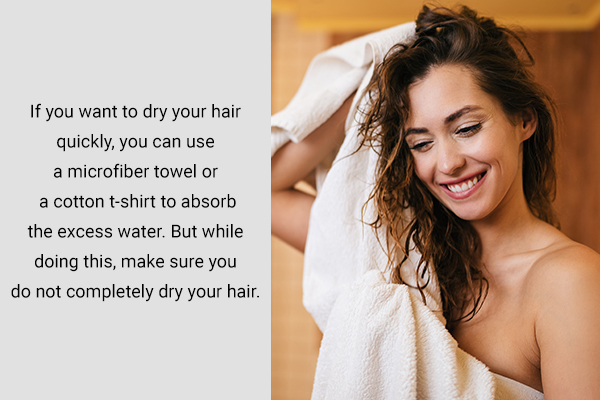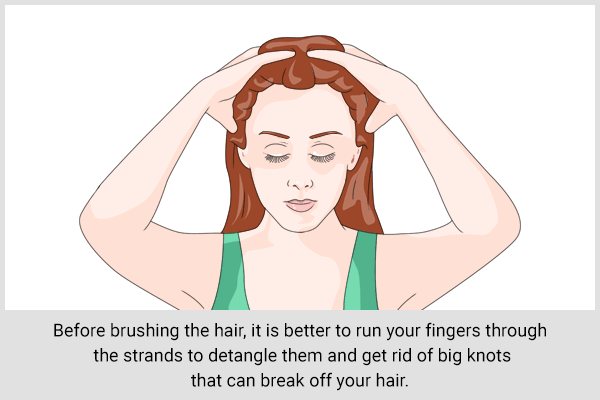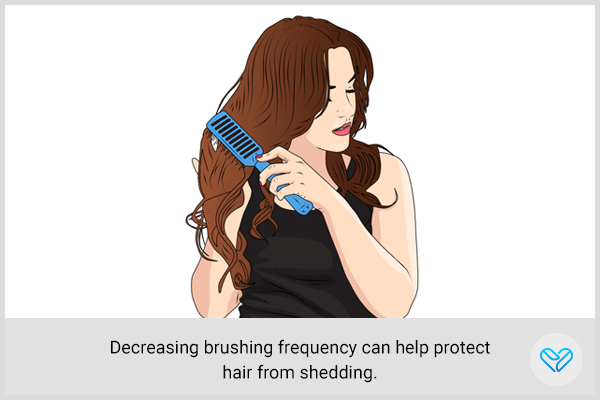In this article:
Imagine getting ready to go out with a perfect ensemble, but as soon as you brush your hair, you are left with nothing but a ball of frizz. This mostly happens to people who have inherently curly or wavy hair.

For those with straight hair, brushing the hair is a pretty easy thing, but for those who have curls and waves, brushing the hair can be a big and dreadful task.
The good news is there is a way to brush wavy hair without making it frizzy at the end. In this article, you will learn how to do just that.
Tips to Brushing Wavy Hair Without Causing Frizziness
Here is a full guide with easy-to-follow steps on how to brush your wavy hair while ensuring no frizziness afterward.
1. Make sure you have clean hair
It is better to always brush wavy hair after they have been washed and conditioned, as it is easy to deal with and very manageable.
This step is necessary because conditioners are special products developed with antifrizz properties and they make your hair detangle easily and remain smooth. (1)
2. Remove excess water from your hair but do not completely dry it

Many people have a habit of drying their hair like they dry the rest of their body – by rubbing a towel on it, often pretty harshly.
However, experts from the American Academy of Dermatology Association advise people to wrap their hair in a towel to dry it instead of letting it air-dry without using any towel at all. (2)
If you want to dry your hair quickly, you can use a microfiber towel or a cotton t-shirt to absorb the excess water. But while doing this, make sure you do not completely dry your hair.
It is best to avoid brushing when the hair is completely dry as this causes breakage or frizziness. Brushing when the hair is still damp is very important for those with waves. (2)(3)(4)
3. Use the right hair products
If your hair is not damp enough or if you have not had the chance to wash it first, then you can use various products to hydrate your hair enough to enable proper detangling.
To lubricate your hair for easy brushing, you can use hair serums, sprays, oils, or masks. (4)(5)
4. Detangle hair in sections and not all at once
Experts advise dividing your hair into several small sections and then detangling with one section at a time. This prevents breakage or frizziness.
You can use rollers or pins to divide the sections, and then slowly, using a wide brush, detangle each section separately.
5. Choose the correct brush and use your fingers to detangle

It is important not to use fine combs or brushes for wavy hair. Instead, use wide combs for brushing waves or curls.
In fact, before brushing the hair, it is better to run your fingers through the strands to detangle them and get rid of big knots that can break off your hair.
There are also brushes specially designed for use on curly hair; you can use them too. (2)(3)
6. Start brushing from the ends and not from the roots
When you’re brushing your hair, start at the tips and work your way up to the roots, doing it gently. If you encounter a tough knot, hold your hair close to the scalp to avoid pulling too hard.
For really stubborn tangles, you can use a small amount of petroleum jelly. Just apply it to the tangle and massage it in to make it easier to comb through. (6)
7. Be gentle and do not overbrush

Overbrushing the hair is associated with hair loss. This has been proven by a study that found decreasing brushing frequency can help protect hair from shedding. (7)
Some experts also claim that overbrushing or being very harsh with the strokes can pave the way for frizziness.
Most-Asked Questions
How frequently should I brush my wavy hair to avoid frizz?
Avoid overbrushing! Once a day is usually sufficient.
Can brushing too often lead to frizz in wavy hair?
Yes, excessive brushing can disturb the hair’s natural texture and cause frizz.
When is it better to brush wavy hair, when it is wet or dry?
It’s gentler to brush wavy hair when it’s damp.
How can I prevent static and frizz while brushing wavy hair?
Use an antistatic spray or a bit of hair serum to tame frizz.
Is it advisable to brush wavy hair with a lot of force?
No, gentle strokes are better!
Final Word
Brushing wavy hair without causing frizz is achievable with the right approach. Start with clean, damp hair and avoid overdrying. Utilize hair products such as serums and oils for added hydration, and remember to detangle hair in small sections gently.
- Was this article helpful?
- YES, THANKS!NOT REALLY


